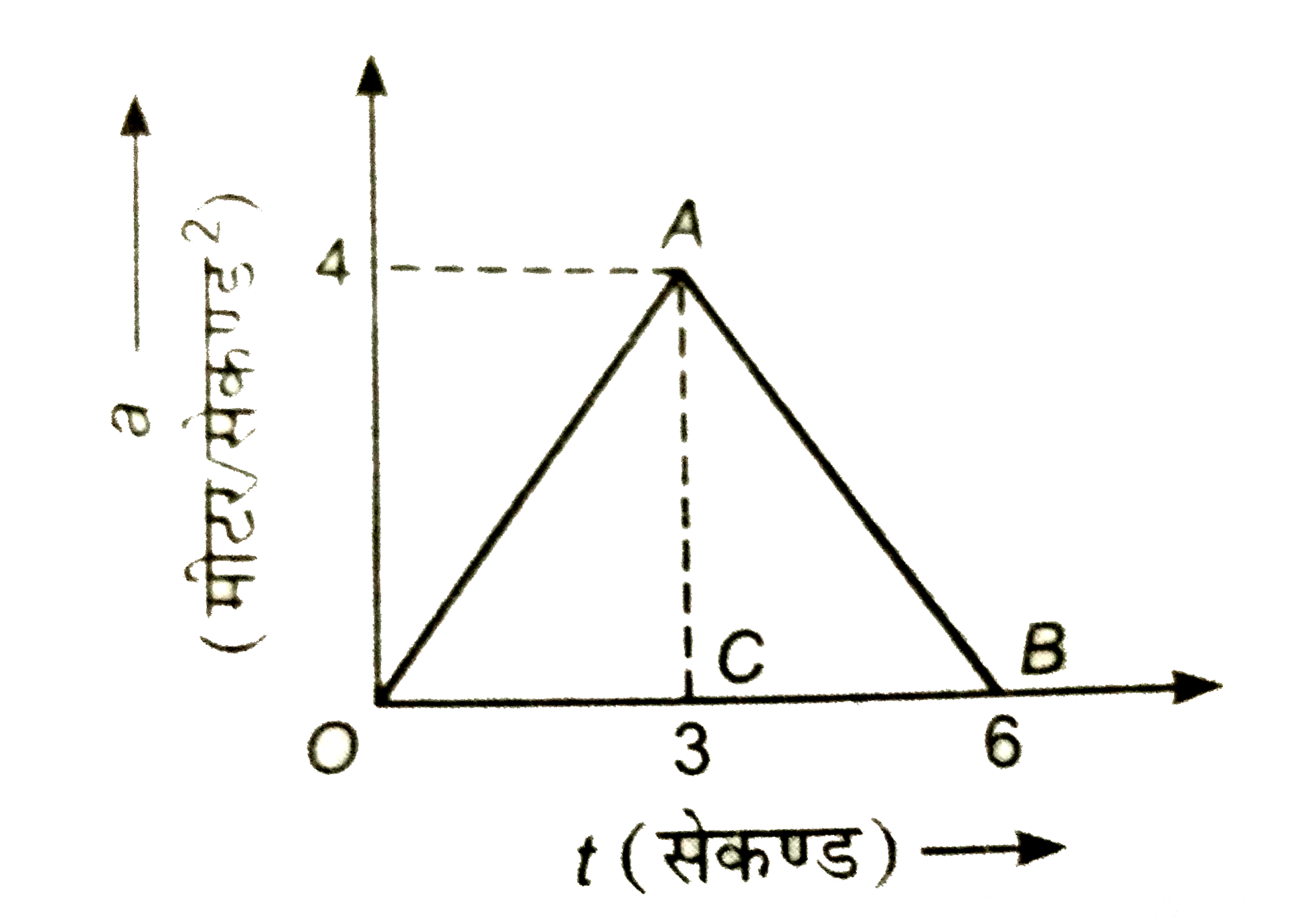A particle is moving in a straight line so that after 't' seconds its distance is 'S' (in cms) from a fixed point of the line is given be S=f(t)=8t+t3.
Find (i) the velocity at time t=2 (ii) the initial velocity (iii) acceleration at t=2 secSolution in Telugu
The correct Answer is:20 cm/sec, 8 cm/sec, 12 cm/sec2
Step by step video, text & image solution for A particle is moving in a straight line so that after 't' seconds its distance is 'S' (in cms) from a fixed point of the line is given be S=f(t)=8t+t^3. Find (i) the velocity at time t=2 (ii) the initial velocity (iii) acceleration at t=2 sec by Maths experts to help you in doubts & scoring excellent marks in Class 12 exams.
Topper's Solved these Questions
- BOOK - SRISIRI PUBLICATIONCHAPTER - APPLICATIONS OF DERIVATIVESEXERCISE - 10.4 MEAN VALUE THEOREMS - VSAQ8videos
APPLICATIONS OF DERIVATIVES
- BOOK - SRISIRI PUBLICATIONCHAPTER - APPLICATIONS OF DERIVATIVESEXERCISE - 10.5 MAXIMA AND MINIMA - LAQ8videos
APPLICATIONS OF DERIVATIVES
- BOOK - SRISIRI PUBLICATIONCHAPTER - APPLICATIONS OF DERIVATIVESEXERCISE - 10.2 TANGENT AND NORMAL - LAQ8videos
APPLICATIONS OF DERIVATIVES
- BOOK - SRISIRI PUBLICATIONCHAPTER - ADDITION OF VECTORSEXERCISE - SPQ7videos
ADDITION OF VECTORS
- BOOK - SRISIRI PUBLICATIONCHAPTER - BOARD MODEL PAPER-1EXERCISE - QUESTIONS24videos
BOARD MODEL PAPER-1
Similar Questions
Verify Rolle's theorem for the function y=f(x)=x2+4on [-3,3]
03:42View SolutionFind the maximum area of the rectangle that can be formed with fixed perimeter 20.
02:39View SolutionShow that the tangent at P(x1,y1) on the curve √x+√y=√a is xx−121+yy−121=a12
05:02View SolutionLet ¯a=¯i+2¯j+3¯kand¯b=3¯i+¯j. . Find a unit vector in the direction of ¯a+¯b
03:30View SolutionIf A={0,π6,π4,π3,π2}andf:A→B is a surjection defined by f(x)=cosx then find B.
01:42View SolutionA particle is moving in a straight line with initial velocity u and uniform acceleration f . If the sum of the distances travelled in t^(th) and (t + 1)^(th) seconds is 100 cm , then its velocity after t seconds, in cm//s , is.
04:33View Solutionएक कण एक सीधी रेखा में गतिमान है। सेकण्ड बाद रेखा में दिये गये बिन्दु से इसकी दूरी मीटर में s=t33−t22−6t+5 द्वारा प्रदत्त है। तब ज्ञात कीजिए-
(i) 5 सेकण्ड बाद कण का वेग क्या होगा? था
(ii) जब कण का वेग शून्य है तब इसका त्वरण क्या होगा?04:10View Solutionसरल रेखा में गतिमान एक कण का त्वरण (a) समय (t) ग्राफ संलग्न चित्र में प्रदर्शित है। कण का प्रारम्भिक वेग 2 मीटर/सेकण्ड है। ज्ञात कीजिए (i) t=3 सेकण्ड तथा t=6 सेकण्ड पर कण का वेग (ii) t=0 से t=6 सेकण्ड के बीच कण का औसत त्वरण।
 02:35View Solution
02:35View SolutionThe acceleration of a particle moving along a straight line is (6t2−3t)cm/s2, at time t seconds. If the velocity of the particel at time 2 seconds be 10cm/s, find its velocity at time t seconds.
02:35View Solutionएक कण एक सरल रेखा में इस तरह से चलता हैं ताकि इसका स्थिति t सेकेण्ड के बाद s(t)=6t−t2 हैं | इसका प्रारंभिक वेग क्या हैं।
04:06View SolutionA particle is moving in a straight line so that after 't' seconds its distance is 'S' (in cms) from a fixed point of the line is given be S=f(t)=8t+t3.
Find (i) the velocity at time t=2 (ii) the initial velocity (iii) acceleration at t=2 sec05:07View SolutionA particle is moving in a straight line and its distance x cm from a fixed point on the line at any time t seconds is given by ,
x=112t4−23t3+32t2+t+15.
At what time is the velocity minimum ? Also find the minimum velocity.View SolutionA particle is moving in a straight line so that after t seconds its distance is s (in cms) from a fixed point on the line is given by s=f(t)=8t+t3. Find the velocity at time t= 2sec (ii) the initial velocity can acceleration at t=2 sec
01:51View SolutionA particle is moving in a straight line so that after t seconds its distance is s (in cms) from a fixed point on the line is given by s=f(t)=8t+t3. Find the velocity at time t= 2sec (ii) the initial velocity can acceleration at t=2 sec
02:54View SolutionA particle is moving in a straight line with initial velocity u and uniform acceleration f . If the sum of the distances travelled in t^(th) and (t + 1)^(th) seconds is 100 cm , then its velocity after t seconds, in cm//s , is.
04:33View SolutionA particle moves in a straight line such that its distance in 't' seconds from a fixed point is (6t−t2) cm. find its velocity at the end of t=2 sec.
01:51View Solution

